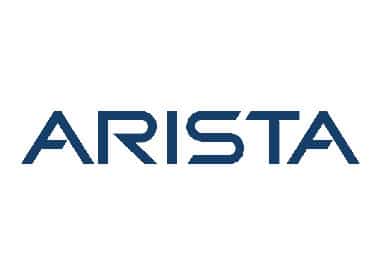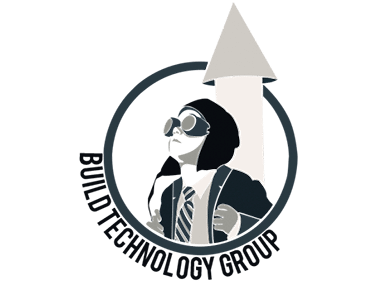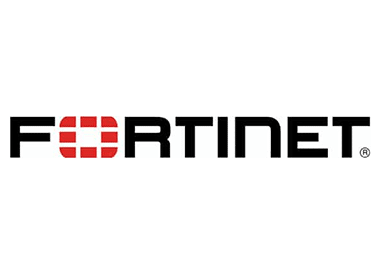
Your Search is Over
From the beginning, Josefin was designed to be clean, simple and modern. Attention to detail was paramount throughout the design and build process. Clean typography with generous amounts of white space ensure an enjoyable reading experience, while also allowing stunning photography to shine.
Whether you use Josefin for a marketing site or to sell products, we’re confident Josefin will impress your site visitors.
Finally, a clean & modern Divi Child Theme using great typography and imagery. Class all the way.
Nam consequat diam nec leo rutrum tempus. Nulla accumsan eros nec sem tempus scelerisque. Lorem ipsum dolor sit amet, consectetur adipiscing elit. Curabitur tincidunt mollis ante non volutpat.
We believe in being
Beautiful & Simple
Features
Clean Typography
Josefin features the Josefin & Merriweather Google Fonts. The styling has been meticulously set to fit the aesthetics of the theme, providing a relaxing reading experience.
Styled Counters
We’ve taken extra care in styling the number counter feature Divi offers. We’ve included dark & light background options. Showcase your stats in style with the Josefin Child Theme.
Twitter Widget
We’ve utilized and styled the Rotating Tweets Plugin by Martin Tod. Display your tweets elegantly using this plugin and the Josefin Child Theme. We’ve included an instructional video on how to set this up.
Stunning Imagery
A photo is worth a thousand words. Parallax backgrounds combined with great use of whitespace allow the focus to be on your beautiful images. We’ve also styled a masonry layout as an option for your images.
Styled Form
We’ve also taken extra care in styling the contact form in Divi. We’ve included dark & light background options. Make your contact form stand out with the Josefin Child Theme.
Instagram Widget
We’ve utilized and styled the WP Instagram Widget by Scott Evans. Display your Instagram photos elegantly using this plugin and the Josefin Child Theme. We’ve included an instructional video on how to set this up.
Extra Animations
Divi comes with some nice animation options. We’ve added additional animation classes you can apply to your sections and modules. We’ve included an instructional video on how to use these animations.
Features Grid
Easily build a features grid with Josefin. We’ve created an instructional video with links to the CSS and a Divi Layout files. Import the layout into your site with a single click.
Superior Support
Your purchase comes with our superior support. Email us and we’ll respond to you as soon as possible. We also have video tutorials showing how to implement different features of the theme.
We believe in being
Beautiful & Simple
Heading
Lorem ipsum dolor sit amet, consectetur adipiscing elit. Curabitur tincidunt mollis ante non volutpat. Nam consequat diam nec leo rutrum tempus. Nulla accumsan eros nec sem tempus scelerisque. Morbi tincidunt risus magna, posuere lobortis felis. Donec at vehicula risus. Cras vel sollicitudin ipsum. Etiam tincidunt placerat enim, a rhoncus eros sodales ut. Lorem ipsum dolor sit amet, consectetur adipiscing elit.
Finally, a clean & modern Divi Child Theme using great typography and imagery. Josefin is class all the way.
Lorem ipsum dolor sit amet, consectetur adipiscing elit. Curabitur tincidunt mollis ante non volutpat. Nam consequat diam nec leo rutrum tempus. Nulla accumsan eros nec sem tempus scelerisque. Morbi tincidunt risus magna, posuere lobortis felis.
Carefully Crafted
Layouts & Modules
Featured Video
Video Title
Lorem ipsum dolor sit amet, consectetur adipiscing elit. Curabitur tincidunt mollis ante non volutpat. Nam consequat diam nec leo rutrum tempus. Nulla accumsan eros nec sem tempus scelerisque. Morbi tincidunt risus magna, posuere lobortis felis. Donec at vehicula risus. Cras vel sollicitudin ipsum. Etiam tincidunt placerat enim, a rhoncus eros sodales ut.
Lorem ipsum dolor sit amet, consectetur adipiscing elit. Curabitur tincidunt mollis ante non volutpat. Nam consequat diam nec leo rutrum tempus. Nulla accumsan eros nec sem tempus scelerisque.
#1 Hits
Million Downloads
Ready to Rock
Josefin is sure to impress
Lorem ipsum dolor sit amet, consectetur adipiscing elit. Curabitur tincidunt mollis ante non volutpat. Nam consequat diam nec leo rutrum tempus. Nulla accumsan eros nec sem tempus scelerisque. Morbi tincidunt risus magna, posuere lobortis felis. Donec at vehicula risus. Cras vel sollicitudin ipsum. Etiam tincidunt placerat enim, a rhoncus eros sodales ut.
Photography & Images provided by Unsplash.com and DeathToTheStockPhoto.com
Nam consequat diam nec leo rutrum tempus. Nulla accumsan eros nec sem tempus scelerisque. Morbi tincidunt risus magna, posuere lobortis felis. Donec at vehicula risus. Cras vel sollicitudin ipsum. Etiam tincidunt placerat enim, a rhoncus eros sodales ut.
We believe in being
Beautiful & Simple
Heading
Lorem ipsum dolor sit amet, consectetur adipiscing elit. Curabitur tincidunt mollis ante non volutpat. Nam consequat diam nec leo rutrum tempus. Nulla accumsan eros nec sem tempus scelerisque. Morbi tincidunt risus magna, posuere lobortis felis.
Lorem ipsum dolor sit amet, consectetur adipiscing elit.
Heading
Lorem ipsum dolor sit amet, consectetur adipiscing elit. Curabitur tincidunt mollis ante non volutpat. Nam consequat diam nec leo rutrum tempus. Nulla accumsan eros nec sem tempus scelerisque. Morbi tincidunt risus magna, posuere lobortis felis.
Lorem ipsum dolor sit amet, consectetur adipiscing elit.
+ Lines of Code
+ Hours
+ Images
Crafted Theme
Video Tutorials
Lorem ipsum dolor sit amet, consectetur adipiscing elit. Curabitur tincidunt mollis ante non volutpat. Nam consequat diam nec leo rutrum tempus. Nulla accumsan eros nec sem tempus scelerisque. Morbi tincidunt risus magna, posuere lobortis felis. Donec at vehicula risus. Cras vel sollicitudin ipsum. Etiam tincidunt placerat enim, a rhoncus eros sodales ut.
Friendly Support
Lorem ipsum dolor sit amet, consectetur adipiscing elit. Curabitur tincidunt mollis ante non volutpat. Nam consequat diam nec leo rutrum tempus. Nulla accumsan eros nec sem tempus scelerisque. Morbi tincidunt risus magna, posuere lobortis felis. Donec at vehicula risus. Cras vel sollicitudin ipsum. Etiam tincidunt placerat enim, a rhoncus eros sodales ut.
How to install Josefin Child Theme
Click here to check out our installation page. There you will find our step-by-step installation instructions, walk-through videos and FAQ’s.
Where to find great stock photography
If you don’t want to pay the $$$ for Shutterstock or Adobe Stock, some of our favorite sites are unsplash.com and deathtothestockphoto.com. You can also find some great photos at pixabay.com and pexels.com!
Installing the Josefin Google Font
Guess what? You don’t have to, it’s already installed! Booyah.
How to get support for Josefin
Submit a ticket to us via https://besuperfly.com/contact and we’ll respond to you as soon as possible.
Blog
A Night to Remember: ATP Awards Gala 2025 Recap
On Thursday, March 13th, the ATP hosted an unforgettable evening of celebration and recognition at the 2025 ATP Awards Gala. Held at the stunning Fernbank Museum, this year’s gala embraced the excitement of a Mardi Gras Masquerade, bringing a vibrant and festive flair to the annual event.
With 275 attendees, an incredible lineup of honorees, thrilling entertainment, and a lively casino night, the event proved to be a true celebration of excellence in the technology community.
Honoring the Best in Technology
The highlight of the evening was the prestigious awards ceremony, where we recognized outstanding individuals who are making a significant impact in their respective fields. The finalists, selected from a competitive pool of nominees, represented innovation, leadership, and service within the Atlanta technology community.
We are proud to announce the 2025 award winners:
- IT Professional of the Year: Sheneen Wilborn, Southwire
- Innovative Disruptor: Gaurav Singal, Cantaloupe
- Executive Leadership Award: Michael Browne, Graphic Packaging
- Emerging Leader Award: Danielle Hall, ANDMORE
- Tech Service Provider of the Year: Hans Delly, Slalom
- ATP of the Year Winner: Monika Mueller, Softensity
- Dan Webber Connector Award: Alicia Lyttle, AI InnoVision
Congratulations to all of our winners and finalists for their achievements and contributions to the industry!
Casino Night: A Winning Hand
In addition to celebrating top tech talent, attendees enjoyed the rush of our casino night experience. With gaming tables buzzing, friendly competition ensued as guests tested their luck at blackjack, poker, and roulette. The casino excitement added a thrilling edge to the evening, keeping guests engaged and entertained throughout the night.
A Dazzling Mardi Gras Masquerade
The gala’s Mardi Gras Masquerade theme brought an air of elegance and mystery, as guests donned intricate masks and vibrant attire to embrace the spirit of the evening. The Fernbank Museum was transformed into a festive wonderland, complete with dazzling decor, lively music, and a celebratory atmosphere that made the night truly magical.
Thank You to Our Sponsors & Supporters
Events like the ATP Awards Gala would not be possible without the generous support of our sponsors, partners, and volunteers. Your contributions helped make this year’s gala an extraordinary success, and we are incredibly grateful for your dedication to our mission.
- QTS – Louis Armstrong Lounge Sponsor
- Varonis – VIP Casino Host
- Softensity – Buffet Sponsor
- Manhattan – Photo Booth Sponsor
- T-Mobile For Business – Executive Leadership Award Sponsor
- TRC – House Sponsor
- WrightNow Solutions – Live Band Sponsor
- Pyramid – House Sponsor
- Innovien Solutions – House Sponsor
- South Wire – House Sponsor
- ANDMORE – House Sponsor
- vLink – Roulette Sponsor
- Slalom – Snapshot Sponsor
- Method Q – Media Sponsor
Looking Ahead
The ATP Awards Gala 2025 was a night to remember, celebrating not only achievements in technology but also the strength of our community. Thank you to everyone who attended and helped make the evening special. We look forward to another incredible year ahead and can’t wait to see you at our next event!.
Crypto: Renewed Market Excitement
The cryptocurrency market is experiencing a resurgence, capturing renewed attention from investors. With advancements in decentralized finance (DeFi), non-fungible tokens (NFTs), and cross-chain interoperability fueling and fresh market opportunities emerging, digital assets are once again proving their relevance.
Whether you’re deeply engaged in the crypto space or observing from the sidelines, now is a key moment to explore the factors driving this renewed momentum and what they mean for the future of digital finance.
The Renewed Investor Buzz Around Cryptocurrency
Before we analyze the factors driving recent market interest, let’s understand why the cryptocurrency trend dipped between 2021 and 2023. This significant plunge is often referred to as a “crypto winter.”
After the 2021 surge in cryptocurrency prices, the market experienced a significant crash in 2022. Factors contributing to this crypto winter included rising inflation, global economic uncertainty, tightening monetary policies, and the collapsing of major projects and exchanges. These factors resulted in a decline in investor confidence, regulatory pressure, and the bankruptcy of many large crypto firms.
Thankfully, cryptocurrency survived the cold.
Why is the crypto trend heading back up? There are various reasons.
1. Advancements in blockchain
Technological advancements in blockchain drive renewed interest, with innovations like Ethereum’s transition to Proof-of-Stake (PoS) significantly reducing energy consumption while enhancing network security. Additionally, layer-2 scaling solutions, such as rollups, have improved transaction speed and cost efficiency.
2. Decentralized Finance (DeFi) and Web3
Regarding blockchain, growth in DeFi protocols and the broader Web3 ecosystem (designed to be user/community-driven) has rekindled interest in its practical applications.
3. Shifts in traditional financial markets
When traditional markets struggle with issues like banking crises or low investment returns, many investors look to cryptocurrencies for their high growth potential and diversification. This makes crypto an appealing alternative during times of economic uncertainty.
4. Institutional interest
Leading financial institutions are increasingly interested in introducing cryptocurrency ETFs. This move signals growing legitimacy and suggests the potential for greater stability in the crypto market.
BlackRock and Fidelity, for example, have established themselves as early leaders in the Bitcoin ETF market. BlackRock manages $15 billion in Bitcoin assets, and Fidelity holds $9 billion.
Overall, in 2024, many investors will clearly see how advantageous cryptocurrency is becoming, and the increase in worldwide adoption and acceptance of it will help.
Institutional Adoption and Mainstream Acceptance
With over 580 million crypto users worldwide, it is no shock that corporations, banks, and governments are embracing cryptocurrency for payments, investments, and infrastructure.
Corporations
Large corporations are integrating crypto into their business operations.
A few companies, such as Tesla and PayPal, now accept cryptocurrency for goods and services. Customers can pay with digital currencies, which enhances convenience and attracts tech-savvy consumers.
Tesla allows customers to make a payment through Dogecoin for specific eligible products.
Starbucks was also on the list. However, they currently do not accept direct payment with Bitcoin. However, customers can still purchase gift cards with crypto through a third-party company and earn their “Stars.” Maybe one day!
Corporations such as MicroStrategy and Square have made significant Bitcoin investments, viewing it as a store of value and a hedge against inflation. These moves show a growing confidence in crypto as a long-term asset.
Banks
Regarding banks, there are serious financial advantages for them to partake in crypto services. This can include offering diverse crypto services such as trading, custody, and tokenization. As seen with Goldman Sachs ‘ crypto trading desk, trading platforms let customers buy and sell cryptocurrencies while generating transaction fees. Custody services, like Deutsche Bank’s in-house wallets for institutional clients, provide secure crypto storage and additional fee income. Tokenization platforms like Goldman Sachs’ GS DAP help digitize real-world assets, opening new investor opportunities.
In addition to these new services, crypto can help boost banks’ current products and services, benefiting customers.
Governments
Governments worldwide embrace crypto, and nations are scurrying to secure a share of the currency. Many governments, including the U.S. and the EU, are introducing regulatory frameworks to legitimize cryptocurrency use, prevent fraud, and protect consumers. This fosters innovation while ensuring financial stability.
According to a post in CCN the author shares, “The United States leads nation-state holdings with 198,109 BTC, leading the largest Bitcoin-holding government.” This is valued at over $19.34 billion. The second largest Bitcoin reserve is held in China at $18.54 billion. Cryptocurrency is not only held by superpower nations. The author says, “Smaller nations making strategic moves include Bhutan and El Salvador, which are leveraging Bitcoin to boost economic resilience and financial inclusion.”
These stats indicate cryptocurrency is a significant part of national economic strategies. It is a tool for investment, innovation, and economic development.
Innovations Reigniting Market Enthusiasm
The crypto space has witnessed meaningful innovations in recent years, creating renewed market excitement and an upward trend. Advancements like decentralized finance (DeFi) and non-fungible tokens (NFTs) fuel this crypto enthusiasm and are part of the appeal.
Decentralized finance
DeFi refers to blockchain-based financial services that operate without intermediaries like banks. It allows users to lend, borrow, trade, and earn interest on digital assets through smart contracts–self-executing blockchain codes.
People seek out DeFi platforms to improve their businesses for reasons such as needing privacy-preserving solutions, wanting its features of artificial intelligence integration or decentralized identity, and appreciating the possibility of sustainability.
DeFi platforms like Aave, Uniswap, and Curve have gained traction, and the total value of DeFi protocols has reached billions of dollars, proving interest is on the rise.
In a recentForbes article, the author discusses two companies that have improved their business by using DeFi blockchain tech. <
- In the retail sector, Starbucks has successfully leveraged blockchain technology within traditional loyalty programs through its Odyssey platform. Built on Polygon’s blockchain, the program has engaged over 100,000 members in its first year, proving that blockchain technology can enhance rather than replace existing business infrastructure.
- Major financial institutions are moving beyond experimental projects to integrate blockchain and infrastructure, realizing significant cost reductions by eliminating intermediaries and manual processes. JPMorgan’s Onyx and JPM Coin platforms now process over $1 billion in daily transactions. Meanwhile, Broadridge’s distributed ledger repo (DLR) platform handles over $1 trillion per month in notional value, with its JPM Coin integration further streamlining repo settlement efficiency.
Non-fungible tokens
NFTs are one-of-a-kind digital assets verified using blockchain technology, guaranteeing their authenticity and proving who owns them.
Tech experts at Medium discuss what is next for NFTs: “Technological advancements like Layer 2 scaling solutions and interoperable blockchain networks are set to improve the efficiency, scalability, and user experience of the NFT market. These innovations aim to overcome current limitations and drive broader adoption across various industries.”
The author also states, “NFTs will be crucial in the development of Web3 applications, enabling decentralized finance (DeFi), decentralized autonomous organizations (DAOs), and peer-to-peer transactions.”
Advancements in NFTs benefit individuals and businesses within various crafts and industries, such as art, collecting, entertainment, media, fashion, real estate, gaming, sports, and education.
Regulatory Clarity Driving Confidence
As popularity rises, governments worldwide are creating updated and new rules surrounding cryptocurrencies. The crypto space is no longer this feral, free-range place where it seemed no rules or regulations apply. As nations realize the advantages of crypto, their leaders are taking action to create and apply regulations that stick and allow for higher security and privacy. Overall, emerging global regulations reduce uncertainty and encourage new players to enter the market.
While things are slow-moving in the U.S., they are moving. According to the World Economic Forum<, “Two bills in particular, the Financial Innovation and Technology (FIT) for the 21st Century Act and the Blockchain Regulatory Certainty Act, helped define when a cryptocurrency is a security or a commodity, expand oversight of the industry, and clarify the roles of different bodies in managing crypto.”
It is important to note that FIT did pass in 2024, while the latter remains a bill in limbo.
The author also shares that the EU “introduced the world’s first comprehensive cryptocurrency regulations in May 2023, known as the Markets in Crytpo-Assets Regulation (MiCA).”
With these regulations, among others from different countries and with more to come, the rapidly evolving crypto market will be more certain and consistent, and it will level the playing field. In turn, regulations will allow for transparency and trust, increasing the number of individuals and businesses playing the game.
Broader Applications Beyond Speculation
Today, cryptocurrencies are bringing real-world solutions across diverse industries.
Remittances
For example, crypto enables faster and cheaper cross-border payments with remittances, helping individuals and families bypass expensive traditional systems. Examples of these crypto platforms include Stellar (XLM), Ripple (XRP), and Revolut.
On Stellar’s website, there is a page about their blockchain remittances. They promote the product by saying, “Expand your business with versatile payment solutions that remove reliance on traditional cross-border payment rails. Access the Stellar network’s global ecosystem of anchors, wallets, and cash to crypto on and off ramps with interoperability standards that can connect your business with financial institutions, exchanges, fintechs, and more.”
This solution, among others, demonstrates how cryptocurrencies can streamline and democratize international money transfers, making them more accessible, affordable, and efficient for users worldwide.
Gaming
In gaming, blockchain-based currencies and assets revolutionize how players trade, own, and monetize in-game items.
Blockchain-based currencies transform the gaming industry by giving players true ownership of their in-game assets and enabling new ways to earn and interact within virtual worlds.
In traditional gaming, players often spend real money to purchase in-game items, such as skins or weapons, but these assets are locked within the game and cannot be freely traded or used elsewhere. With blockchain technology, these items are represented as non-fungible tokens (NFTs) or digital assets, allowing players to own, trade, and sell them on decentralized marketplaces outside the game.
The gaming industry has seen a recent plunge in crypto transactions, with only a “low” $300 million in September 2024, according to data from the crypto analytics platform CryptoSlam.
In an article in Forbes, the author cites, “During the ‘perceived [September] collapse,’ NFTs have remained resilient, particularly within the gaming industry where some traditional video game companies see the industry more as a technology that improves gaming rather than just a case of buying and selling PFP NFTs.”
If you’re a gamer—according to Motley Fool, a stock investing and market research company, the top NFT games for 2024 are Alien Worlds, Arc8, Axie Infinity, CyptoBlades, Splinterlands, and MOMO Farmer.
Supply chain management
Supply chain management has also been transformed, with cryptocurrencies and blockchain offering greater transparency and efficiency in tracking goods from production to delivery.
Blockchain provides end-to-end traceability for industries requiring stringent compliance, such as food, pharmaceuticals, and luxury goods, ensuring products meet safety and quality standards.
Consumers, too, benefit from greater confidence, as they can verify a product’s origin, authenticity, and ethical sourcing through supply chain data. This combination of features makes blockchain and cryptocurrencies powerful tools for creating more resilient and reliable supply chain ecosystems.
Conclusion
The cryptocurrency market is thriving again, fueled by advancements in blockchain technology, DeFi, and mainstream adoption. Cryptocurrency is no longer just speculative; it delivers real-world solutions—from faster remittances to empowering gamers with asset ownership and enhancing supply chain transparency. Governments, corporations, and individuals embrace its potential, allowing for greater accessibility and innovation. This renewed excitement marks a pivotal moment for digital assets, making now the perfect time to explore their transformative role in reshaping industries and the global economy.
Wearable Technology Advancements – The Future is on Your Wrist and Beyond
The future of wearable technology is here, reshaping how we work, live, and thrive. From advanced health monitoring, lifestyle and fitness watches, gaming, and workplace innovations, wearable tech is becoming ubiquitous and necessary in some industries. Smart technology such as these helps us improve our health and boost productivity at home and in the office, and wherever you wear it on your body, the latest trend will take you to the next level.
Advanced Health Monitoring Devices
Wearable technology is revolutionizing health monitoring. Devices like continuous glucose monitors, blood pressure trackers, and advanced sleep analysis tools go beyond basic metrics, providing actionable data to enable individuals to manage their daily health. Health monitoring devices are important because they allow patients or customers preventative, diagnostic, and management capabilities, putting their health in their hands.
The following are key categories of advanced health monitoring devices:
-
Fitness trackers and smartwatches
Fitness trackers and smartwatches can monitor physical activity, sleep patterns, and heart rate; some can even detect cardiovascular issues.
-
Continuous Glucose Monitoring
CGM devices help save lives daily by helping diabetes patients track blood glucose levels in real time.
-
Blood pressure trackers
Physicians can monitor patients remotely (and patients can monitor themselves) to check where their blood pressure is at any given time.
-
Wearable biosensors
In remote patient monitoring and critical illness management, individuals can continuously track physiological data like body temperature, respiratory rate, and hydration levels.
There are even smart wearables for neurological monitoring for those with seizure disorders. The list of advantageous tracking and monitoring devices continues. Technology is truly on our side going into 2025!
In an article by BCC Research, the author discusses market trends and innovations in the wearable medical device market to pay attention to.
He shares, “The global market for wearable medical devices was valued at $35.6 billion in 2023. This market is estimated to grow from $45.0 billion in 2024 to $151.8 billion by the end of 2029, at a compound annual growth rate (CAGR) of 27.5% from 2024 through 2029.”
Current trends shape the health monitoring device market.
Integrating AI and machine learning is driving advancements in wearable devices, enabling predictive analytics, personalized care, and early disease detection. Companies are innovating with miniaturized, user-friendly designs and improved battery life to enhance functionality and usability.
Additionally, there has been an increase in designs that monitor mental health and seamlessly integrate with health platforms like EHRs, enabling more body and mind care.
These innovations pave the way for a future where personalized healthcare is always within reach.
Fitness and Lifestyle Wearables
Wearable trends now focus more on holistic wellness, including stress management tools, hydration reminders, and personalized fitness coaching. These advancements provide users with proactive, tailored support for overall health and well-being.
The health and wellness market is worth over $400 billion in America. In an article from McKinsey & Company about wellness trends and insights, the author discusses its research:
“Eighty-two percent of US consumers now consider wellness a top or important priority in their everyday lives…this is especially true among Gen Z and millennial consumers, who are now purchasing more wellness products and services than older generations, across the same dimensions we outlined in our previous research: health, sleep, nutrition, fitness, appearance, and mindfulness.”
That said, fitness and lifestyle wearables are trending upward as technological advancements make them more accurate, versatile, and accessible, appealing to a broader range of users.
Examples of some of the best fitness trackers from 2024, discussed by Live Science, include:
- Amazfit Balance
- Apple Watch Series 8
- Garmin Fenix 7
- Xiaomi Mi Smart Band 9
- Garmin Forerunner 965
In addition, the Oura Ring 4 (most recent version) provides precise sleep, heart rate, and activity tracking in a compact, stylish design, offering personalized insights and early health alerts.
If we look forward to 2025, wearable technology and data-driven training technology will be the top trends.
The American College of Sports Medicine posted an article on the top fitness trends for 2025, and each trend received expert commentary.
-
Wearable technology
“Wearables are getting smarter each year, and it is important we leverage these enhancements to motivate and inform our clients” (Cayla McAvoy, PhD, ACSM-EP).
“With access to more and more data, exercise professionals should work to educate clients on how to interpret and apply the data to drive improvements in health behaviors like physical activity, sleep, and even recovery” (Rachelle Reed, MS, PhD, ACSM-EP).
-
Data-driven training
“Clients are desiring instant feedback on their training so that they can adjust or modify to maximize outcomes and reduce injury…” (A’Naja M. Newsome, PhD, ACSM-CEP, EIM).
The rise of wearable technology reflects a growing consumer demand for tools that support holistic wellness and data-driven insights. They are imperative in empowering individuals to make informed health, fitness, and overall well-being decisions.
Smart Glasses and Augmented Reality (AR)
The technology in VR and AR has progressed so much over the last few years that it’s almost time to replace bulky headsets with smart glasses.
Augmented Reality (AR) glasses are wearable devices that overlay digital information, images, or holograms onto the real world through transparent or semi-transparent lenses. They combine the physical and digital worlds, enabling users to interact with virtual content while maintaining awareness of their surroundings, slightly different from the VR experience.
AR-enabled glasses, especially ones with enabled AI, benefit individuals by enhancing productivity, gaming, and navigation, bringing digital interactions closer to daily life.
A fantastic example of these glasses is Meta’s Orion, their “first true augmented reality glasses.” Orion is much more advanced than their current AR glasses, the Ray-Ban Meta.
According to their site, “Orion combines the look and feel of a regular pair of glasses with the immersive capabilities of augmented reality – and it’s the result of breakthrough inventions in virtually every field of modern computing.”
In addition, Microsoft, Apple, Snapchat, and Magic Leap each have their version of AR glasses.
How smart AR glasses can benefit industries
Individuals use smart glasses for navigation, remote collaboration, training, gaming, and accessibility, with applications ranging from professional workflows to entertainment and education.
In the healthcare industry, surgeons can use AR glasses to display patient vitals or surgical blueprints in real time, while students can perform surgical procedures in virtual simulations.
AR glasses are an indispensable product for education and training. Students can immerse themselves in historical events, and engineers can explore virtual models of structures in a classroom setting. They also improve professional training, enabling realistic flight simulations for pilots or practice scenarios for emergency responders. In these two realms, the benefits of smart glasses are almost limitless.
In manufacturing, smart AR glasses can provide step-by-step instructions or schematics directly in a worker’s field of view or enable remote expert support for troubleshooting equipment.
They truly are a trend to keep watching.
Wearables for the Workplace
It is important in the workplace to stay ahead of and embrace technological innovations. Smartwatches, augmented reality (AR) glasses, and wearable sensors aren’t just tech trends; they are transformative tools that improve workplace safety, communication, and efficiency, ultimately reshaping businesses’ operations.
In the workplace, employees are using wearables to stay safe. AR glasses can give real-time hazard alerts and allow for hands-free navigation, emergency guidance, and better collaboration between co-workers, experts, and off-site management.
Health and safety experts at the CDC use construction as an example of how wearable technology is useful. The tech comes in different forms: glasses, clothing, watches, and helmets. It can help detect something environmental or physiological that may cause a worker to be in danger or assist in navigating or finding necessary equipment.
In an office setting, AR glasses redefine how teams collaborate and communicate, bringing efficiency and innovation to everyday tasks.
Virtual meetings take on a new light where team members can interact in 3D, increasing communication and efficiency. Language barriers are broken down with real-time subtitles and translations, and presentations are more interactive, allowing participants to visualize data, charts, and prototypes more easily.
Smart rings, brain-tracking headbands, posture-correcting trainers, smart clothing, and smartwatches are all additional examples of wearable tech that benefit employees in an office setting.
Wearables for the workplace are no longer just a convenience; they create a safer, smarter, and more connected workplace across industries.
Sustainability and Customization in Wearables
As with many technologies, wearable tech manufacturers focus on what materials they use in their products. Concerned individuals and businesses are taking responsibility for how they use these products and what they do with them at the end of their lives.
Companies are investing in innovative solutions like biodegradable plastics, recycled materials, and eco-friendly manufacturing to minimize their environmental impact. By prioritizing energy-efficient designs that use rechargeable batteries, wearable devices are built to last longer, promoting sustainability and reducing electronic waste.
Modular design in wearable tech is a type of customization that allows users to select and interchange parts of their product personally. For example, fitness enthusiasts can prioritize advanced health-tracking modules, while office professionals can focus on productivity enhancements like AR displays.
A modular wearable device is eco-friendly because users can easily replace certain parts instead of discarding the entire wearable device. Users can also upgrade without having to purchase another product.
Personalization options are also key selling points in the wearable tech market. Wearable technology offers numerous ways to tailor devices to fit styles, preferences, and needs.
Some great examples of wearable personalization options include customizable hardware (think bands, colors, modular hardware), watch faces and widgets, health and fitness settings, notifications and apps, style integration, accessibility features (think visual, audio, translations), and more.
Conclusion
The wearable tech industry is revolutionizing lifestyle, health, and fitness management, as well as safety, collaboration, and communication. By blending innovation, personalization, and sustainability, wearables are more than tools—they’re essential companions in modern life. As advancements continue to evolve, the possibilities for wearable tech are limitless, solidifying its place as a cornerstone of our connected future.
Get Lost in Design
Contact Us
We believe beauty is more than skin deep… or in our case “pixel deep”, if you will. At Superfly, we aim to build themes that aren’t just beautiful, but functional and built specifically with the user experience in mind.
Did you know you that our themes come with unlimited usage? Pay once and use it on as many sites as you like. How’s that for a time & money saver? Perhaps best of all, our themes include prompt and courteous support. Need help? We’ve got your back.




























